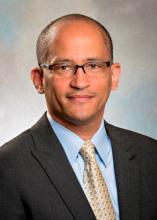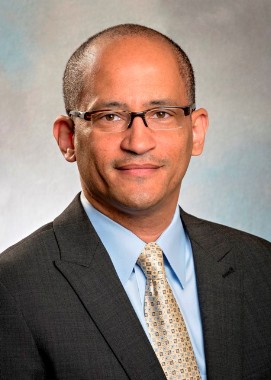User login
The emergency department is a profit center for many hospitals – and could help drive profits even higher as the Affordable Care Act extends insurance coverage to more Americans.
Dr. Michael Wilson, an emergency physician at Brigham and Women’s Hospital, Boston, and David M. Cutler, Ph.D., an economics professor at Harvard University, Cambridge, Mass., looked at more than 11 million emergency department (ED) visits for which patient-level revenue information was available as well as 20 million observations with charge data.
Of those visits, 35% were covered by private insurance, 26% by Medicaid, 21% by Medicare, and 18% were uninsured.
They found that in 2009, hospitals generated ED revenues of about $79 billion, at a cost of $73 billion. The $6.1 billion profit translated into an almost 8% profit margin. The profits came primarily from private pay patients. Hospitals made a 40% margin on the privately insured, or about $17 billion, according to the analysis. This compensated for losses on Medicare (–6%), Medicaid (–40%), and the uninsured (–60%) (Health Affairs 2014;5792-9 [doi 10.1377/hlthaff.2013.0754]).
"One of the more surprising findings was just how dependent the emergency department is on payer mix," Dr. Wilson said, adding that EDs that do not have a large number of private pay patients may not be as profitable.
Dr. Wes Fields, *former chairman of the American College of Emergency Physicians’ Emergency Medicine Action Fund, agreed that payer mix is a key.
"For patients or policy makers trying to interpret the meaning of this study for their own community, it is important to remember that hospital profitability is like real estate valuation: ‘location, location, location,’ " Dr. Fields said.
A spokeswoman with the American Hospital Association said that it’s not just about payer mix. "It is hard to really measure the costs of ED care," said Marie Watteau, of the AHA. "Hospitals have to maintain the standby capacity of an ED 24/7 and that means having trauma teams at the ready. The costs to maintain that service is spread over all of the services provided by the hospital," she said.
Under the ACA, the number of paying patients should improve, Dr. Wilson said. He predicted that by 2023, profit margins would increase to 12%, using a scenario in which 50% of the uninsured remain uninsured, 25% gain private insurance, and 25% enroll in Medicaid. This also assumes that reimbursement for private insurance is at a rate that’s at the midpoint between employer-sponsored private insurance and Medicaid pay. Without the ACA, profit margins would continue to hover around 7%, they said.
Dr. Fields said he was a little skeptical that more Medicaid coverage would increase revenues or profits. Some studies have shown that people who gain Medicaid coverage often are high utilizers of EDs, he said. More use means adding more staff, which is one of the biggest costs for hospitals.
On Twitter @aliciaault
*Correction 5/8/14: A previous version of this story misidentified Dr. Wes Fields as the chairman of the American College of Emergency Physicians’ Emergency Medicine Action Fund. This version has been corrected and updated.
The emergency department is a profit center for many hospitals – and could help drive profits even higher as the Affordable Care Act extends insurance coverage to more Americans.
Dr. Michael Wilson, an emergency physician at Brigham and Women’s Hospital, Boston, and David M. Cutler, Ph.D., an economics professor at Harvard University, Cambridge, Mass., looked at more than 11 million emergency department (ED) visits for which patient-level revenue information was available as well as 20 million observations with charge data.
Of those visits, 35% were covered by private insurance, 26% by Medicaid, 21% by Medicare, and 18% were uninsured.
They found that in 2009, hospitals generated ED revenues of about $79 billion, at a cost of $73 billion. The $6.1 billion profit translated into an almost 8% profit margin. The profits came primarily from private pay patients. Hospitals made a 40% margin on the privately insured, or about $17 billion, according to the analysis. This compensated for losses on Medicare (–6%), Medicaid (–40%), and the uninsured (–60%) (Health Affairs 2014;5792-9 [doi 10.1377/hlthaff.2013.0754]).
"One of the more surprising findings was just how dependent the emergency department is on payer mix," Dr. Wilson said, adding that EDs that do not have a large number of private pay patients may not be as profitable.
Dr. Wes Fields, *former chairman of the American College of Emergency Physicians’ Emergency Medicine Action Fund, agreed that payer mix is a key.
"For patients or policy makers trying to interpret the meaning of this study for their own community, it is important to remember that hospital profitability is like real estate valuation: ‘location, location, location,’ " Dr. Fields said.
A spokeswoman with the American Hospital Association said that it’s not just about payer mix. "It is hard to really measure the costs of ED care," said Marie Watteau, of the AHA. "Hospitals have to maintain the standby capacity of an ED 24/7 and that means having trauma teams at the ready. The costs to maintain that service is spread over all of the services provided by the hospital," she said.
Under the ACA, the number of paying patients should improve, Dr. Wilson said. He predicted that by 2023, profit margins would increase to 12%, using a scenario in which 50% of the uninsured remain uninsured, 25% gain private insurance, and 25% enroll in Medicaid. This also assumes that reimbursement for private insurance is at a rate that’s at the midpoint between employer-sponsored private insurance and Medicaid pay. Without the ACA, profit margins would continue to hover around 7%, they said.
Dr. Fields said he was a little skeptical that more Medicaid coverage would increase revenues or profits. Some studies have shown that people who gain Medicaid coverage often are high utilizers of EDs, he said. More use means adding more staff, which is one of the biggest costs for hospitals.
On Twitter @aliciaault
*Correction 5/8/14: A previous version of this story misidentified Dr. Wes Fields as the chairman of the American College of Emergency Physicians’ Emergency Medicine Action Fund. This version has been corrected and updated.
The emergency department is a profit center for many hospitals – and could help drive profits even higher as the Affordable Care Act extends insurance coverage to more Americans.
Dr. Michael Wilson, an emergency physician at Brigham and Women’s Hospital, Boston, and David M. Cutler, Ph.D., an economics professor at Harvard University, Cambridge, Mass., looked at more than 11 million emergency department (ED) visits for which patient-level revenue information was available as well as 20 million observations with charge data.
Of those visits, 35% were covered by private insurance, 26% by Medicaid, 21% by Medicare, and 18% were uninsured.
They found that in 2009, hospitals generated ED revenues of about $79 billion, at a cost of $73 billion. The $6.1 billion profit translated into an almost 8% profit margin. The profits came primarily from private pay patients. Hospitals made a 40% margin on the privately insured, or about $17 billion, according to the analysis. This compensated for losses on Medicare (–6%), Medicaid (–40%), and the uninsured (–60%) (Health Affairs 2014;5792-9 [doi 10.1377/hlthaff.2013.0754]).
"One of the more surprising findings was just how dependent the emergency department is on payer mix," Dr. Wilson said, adding that EDs that do not have a large number of private pay patients may not be as profitable.
Dr. Wes Fields, *former chairman of the American College of Emergency Physicians’ Emergency Medicine Action Fund, agreed that payer mix is a key.
"For patients or policy makers trying to interpret the meaning of this study for their own community, it is important to remember that hospital profitability is like real estate valuation: ‘location, location, location,’ " Dr. Fields said.
A spokeswoman with the American Hospital Association said that it’s not just about payer mix. "It is hard to really measure the costs of ED care," said Marie Watteau, of the AHA. "Hospitals have to maintain the standby capacity of an ED 24/7 and that means having trauma teams at the ready. The costs to maintain that service is spread over all of the services provided by the hospital," she said.
Under the ACA, the number of paying patients should improve, Dr. Wilson said. He predicted that by 2023, profit margins would increase to 12%, using a scenario in which 50% of the uninsured remain uninsured, 25% gain private insurance, and 25% enroll in Medicaid. This also assumes that reimbursement for private insurance is at a rate that’s at the midpoint between employer-sponsored private insurance and Medicaid pay. Without the ACA, profit margins would continue to hover around 7%, they said.
Dr. Fields said he was a little skeptical that more Medicaid coverage would increase revenues or profits. Some studies have shown that people who gain Medicaid coverage often are high utilizers of EDs, he said. More use means adding more staff, which is one of the biggest costs for hospitals.
On Twitter @aliciaault
*Correction 5/8/14: A previous version of this story misidentified Dr. Wes Fields as the chairman of the American College of Emergency Physicians’ Emergency Medicine Action Fund. This version has been corrected and updated.
FROM THE JOURNAL HEALTH AFFAIRS
Major finding: Hospital EDs had an 8% profit margin in 2009, which may rise to 12% with additional insurance coverage provided through the Affordable Care Act.
Data source: An analysis of Medicare, Medicaid and private insurance cost, charge, and reimbursement data for 11 million ED visits.
Disclosures: Funding provided by the National Institute on Aging. The authors reported no conflicts.

